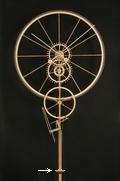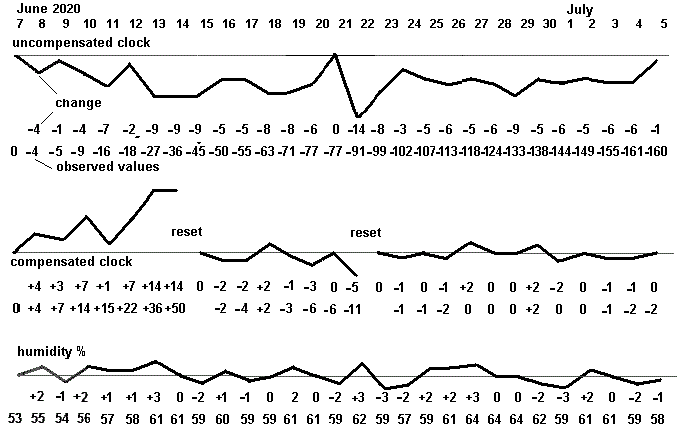The tempo of a pendulum depends on its length. Shorter is faster.
All my clocks have wooden pendulums. It's the traditional material and has the advantage that, unlike steel pendulums, they do not expand much with heat. However wooden pendulums are very sensitive to changes in humidity and they swell and slow down when it is wet. This page describes an attempt to compensate for humidity.
4 June My experimental pendulum is pine-wood: 5 x 27 x 1000 mm. The pendulum weight is a 30cm length of 1 inch cold water pipe, 0.66kg, with the galvanisation machined off. It is regulated with a nut on a long 3mm threaded rod that positions the weight so the clock does one tick a second.
For this experiment I have added a block of wood between the weight and the regulation nut. In this block the grain of the wood is arranged so that the direction of maximum expansion - along the direction of the rings of the tree - runs more or less vertically.
The idea is that the wood block pushes the weight upwards when it is wet, hopefully the same amount as the pendulum lath expands downwards, along the grain.
The idea is so simple that I can't imagine that it is original.



